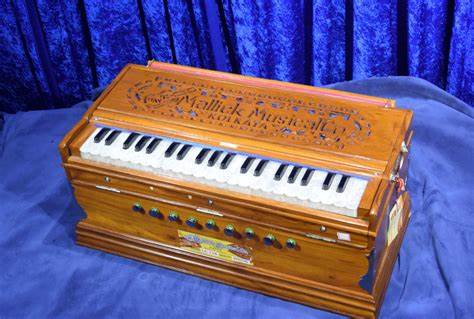Seven Years Ago ,When Ravindra Katoti became the first harmonium player to receive an A grade from All India Radio (AIR), he began to pursue what hadn’t been achieved in decades—to secure a solo harmonium performance on AIR. The harmonium—despite its undeniable popularity across musical traditions and regions in India—has always had a dodgy reputation trailing it. Caught up first in the debates around its foreign origin in the early 1900s when the freedom struggle was gaining momen tum and then its alleged unsuitability to Indian classical music, AIR banned the instrument altogether in 1940. After sev eral entreaties by those who champion the harmonium, the ban was partially lifted in 1971 when it permitted its use as an accompaniment. But a solo perfor mance was still a strict no. And Katoti wanted to change that. AIR uses an audition system, where musicians are graded and offered broad cast engagements accordingly. Once Katoti secured an A grade, he began to do the rounds of bureaucratic offices and station directors, trying to convince them that it was time to allow solo har monium performances on the airwaves. He was finally given a slot in 2016 to do a solo performance on an experimental basis on AIR’s local Dharwad station in Karnataka. And two years later, as he continued to push the case, he was per mitted to do the first solo harmonium performance on the national programme in more than four decades. But four years since, the floodgates haven’t really opened. As Katoti points out, there have been no other solo per formances after his. “They did it on an experimental basis. And once the experi ment was over, they went back to their old mindset, it seems,” he says with a laugh. The debates on the harmonium’s for eign origin and unsuitability to Indian music that once led to its complete ban on AIR were reignited recently when Giani Harpreet Singh, the Jathedar of the Akal Takht, asked the Shiromani Gurd wara Parbandhak Committee (SGPC) to phase out the now ubiquitous harmoni um from kirtans in the Golden Temple. Calling it a “British imposition”, he has set a timeline of three years to replace the harmonium with traditional string instruments. Around the same time, the Delhi Sikh Gurdwara Management Committee (DSGMC) asked raagis or hymn-singers in their gurdwaras to learn to play traditional string instruments in the next six months. While there are few details about when the harmonium first entered the Golden Temple, it is now, as with other forms of music elsewhere in India, an integral part of Sikh devotional music. According to Alankar Singh, an assistant professor of music in Punjabi University’s Depart ment of Music at Patiala who specialises in Hindustani classical music and Gurmat Sangeet, apart from being a trained singer in these traditions himself, the harmoni um was first used at the Golden Temple sometime at the beginning of the 1900s, probably between 1905 and 1908. He points out that while Akal Takht’s Jathe dar may have asked for the harmonium’s removal, it may have become so popular that it might be virtually impossible to do so. “Ninety-nine per cent of the raagis use the harmonium. Most of them don’t know how to play the traditional string instru ments, which by the way, are very difficult to learn. So, I don’t know if this can even be done,” Singh says. The harmonium may have originated in the West, but today, it mostly resides in the Indian subcontinent. Although the prototype of the harmonium was in de velopment a little while earlier, the first known patent of the instrument, in 1840, was by a French inventor named Alexan dre Debain. In the early part of the Raj, British officers had struggled with their musical instruments. Instruments such as organs and harpsichords were tough to transport over the seas, and when brought, rapidly deteriorated in the heat and humidity. But the harmonium solved those problems. It was portable, far cheaper to produce, and more durable than any other keyboard instrument. DEBAIN’S INVENTION, HOWEVER, was nothing like the harmonium we know today. An upright instrument, its bellows had to be operated by foot. Soon, modifications were being made. According to one widely held belief, a musical instrument maker in Calcutta called Dwarkanath Ghose had begun manufacturing the version of the harmo nium we are familiar with today by 1875, where the bellows are hand-pumped, and which can be played while seated on the floor with singers and percussionists.


Comments